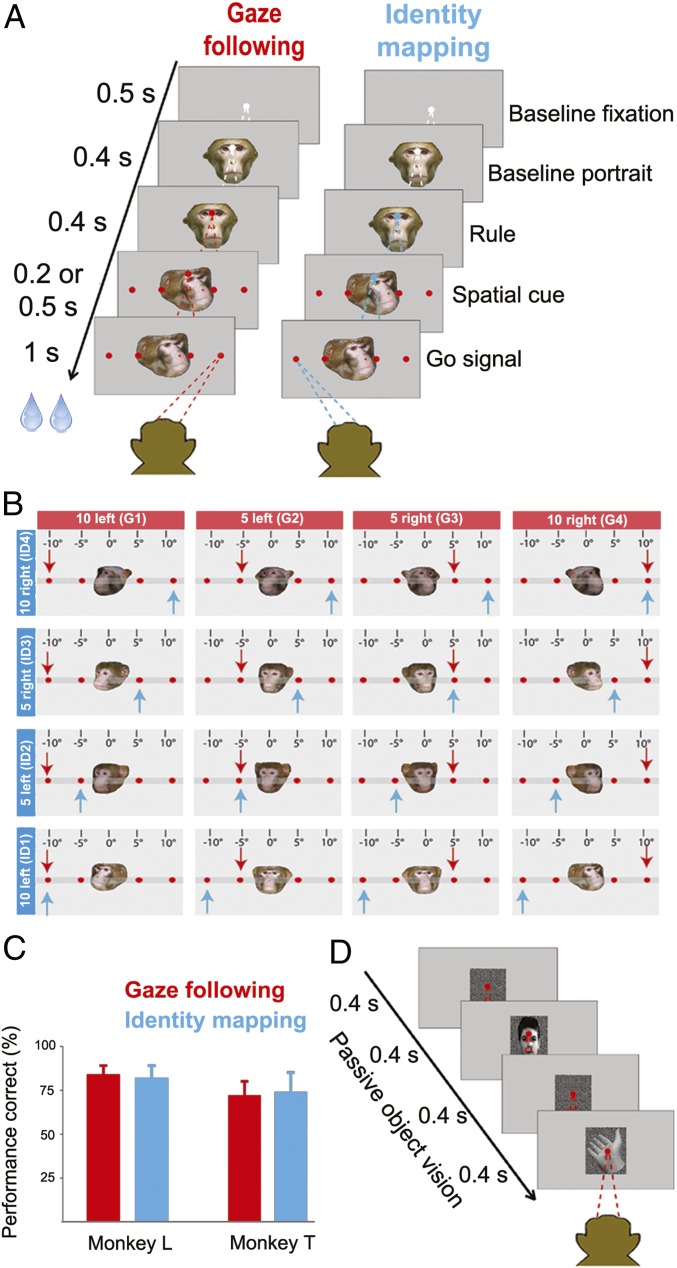Fig. 1.
Behavioral paradigms. (A) Each trial started with the presentation of a white central fixation dot, 500 ms later supplemented by a straight-ahead-looking portrait. Four hundred milliseconds after the onset of the portrait, the fixation dot changed color, specifying the rule to be applied on the trial. Red indicated gaze following and green identity mapping (rendered blue in all figures for better visibility); 400 ms later, the straight-ahead portrait was replaced by the portrait of another monkey (“demonstrator”) looking at one out of the four targets, looming up at the same time. The disappearance of the central fixation point, 200 or 500 ms later served as the go signal to make a saccade to the target specified by the demonstrator. In the gaze-following task the relevant cue was the demonstrator’s head gaze, whereas in the identity-mapping task the observer was asked to ignore the gaze direction and to make a saccade to the target specified by the portrait’s identity, resorting to learned associations between the four targets and the four possible identities of the demonstrators. These two tasks were randomly interleaved. (B) The 4 × 4 cue matrix defined by the four possible demonstrator identities and the four possible orientations of the demonstrator’s head (40° left, 20° left, 10° right, or 20° right from the demonstrator’s viewpoint corresponding to targets at 10° left, 5° left, 5° right, or 10° right from the perspective of the observer). The blue arrow in each cell specifies the target to be chosen according to the prevailing identity and the red arrow the one singled out by head gaze. (C) The behavioral performance of the two monkeys in each of the two behavioral paradigms was very good, well above the 25% chance level, not significantly different for the two tasks (P > 0.05) and without significant difference between the two monkeys. Error bars represent SE. (D) The passive viewing task required the observer to fixate a 0.2° dot while exposed to a sequence of images of faces and nonface stimuli, presented randomly interleaved. Each image was on for 400 ms and followed by a 400-ms-duration random dot background.

